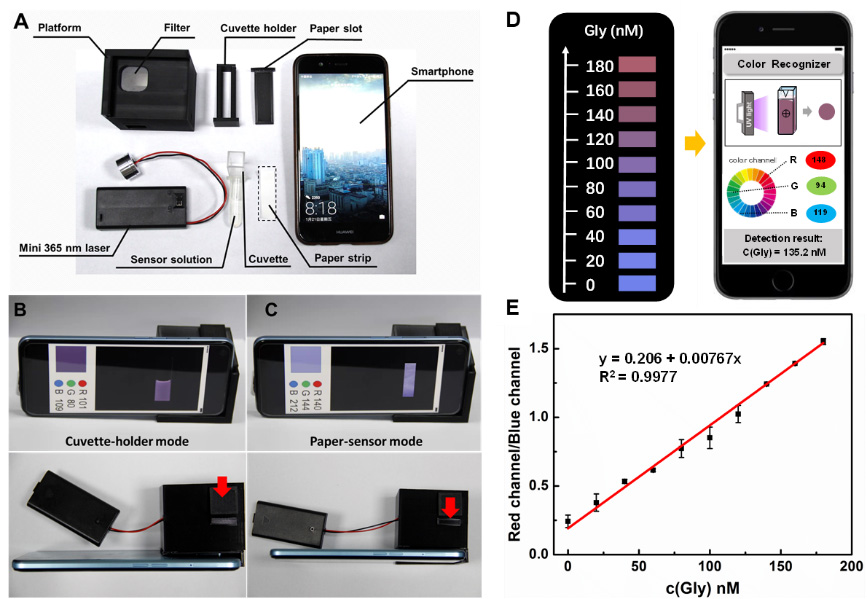
The high usage and unreasonable methods have caused the excessive residues of glyphosate in agricultural products, so it's necessary to find rapid and highly selective methods for detecting glyphosate residues. Laboratory-instruments-based methods or enzyme-inhibition methods usually have harsh environmental requirements and complex operational problems. Therefore, the establishment of a highly selective and sensitive strategy for the rapid quantitative analysis of glyphosate residues is of great importance for trade, environment, food, and human health.
A novel and simple ratiometric fluorescence sensor was developed recently, for selective and visual quantitative detection of glyphosate residues by a research team from Institute of Solid State Physics (ISSP), Hefei Institutes of Physical Science (HFIPS) of Chinese Academy of Sciences (CAS).
The result was published in Hazardous Materials.
The team, which was led by Prof. JIANG Changlong, has been studying visual sensing platforms for rapid quantitative detection of glyphosate in the environment and food for years.
In this work, they developed an enzyme-free portable sensing platform based on ratiometric fluorescent nanosensors for the rapid visual detection of glyphosate.
Dr. ZHANG Qianru, first author of the paper, explained how the platform worked.
The sensor consisted of as-prepared blue Carbon Dots (CDs) and gold nanoclusters (Au NCs). When glyphosate residues reacted with the CDs, aggregation-induced quenching (ACQ) leads to the rapid fluorescence quench of CDs, while the orange fluorescence of the gold nanoclusters remains unchanged.
Since the sensor was not dependent on enzymes, the rapid visualization response and reading detection of glyphosate were achieved in a very short time (2 s) by fluorescence chromaticity change, and the limit of detection (LOD) was as low as 4.19 nM, which was far below the maximum contamination level.
In addition, the researchers combined 3D printing technology and smartphone color recognizer APP to develop a portable fluorescent detection platform for rapid visualization and quantitative monitoring of glyphosate under real-time/field conditions, providing a new strategy for rapid on-site detection of pesticide residues.
This work is financially supported by National Key Research and Development Program of China (2021YFD2000200), National Natural Science Foundation of China (21876175), Key Research and Development Program of Anhui Province (202004d07020013), Postdoctor Research Program of Anhui Province (E04GEGCF).

Figure 1. Schematic diagram of the rapid visualization and quantification of glyphosate residues by ratiometric fluorescence sensor. (Image by ZHANG Qianru)

Figure 2. Smartphone-based monitoring platform for visual quantitative detection of glyphosate. (Image by ZHANG Qianru)